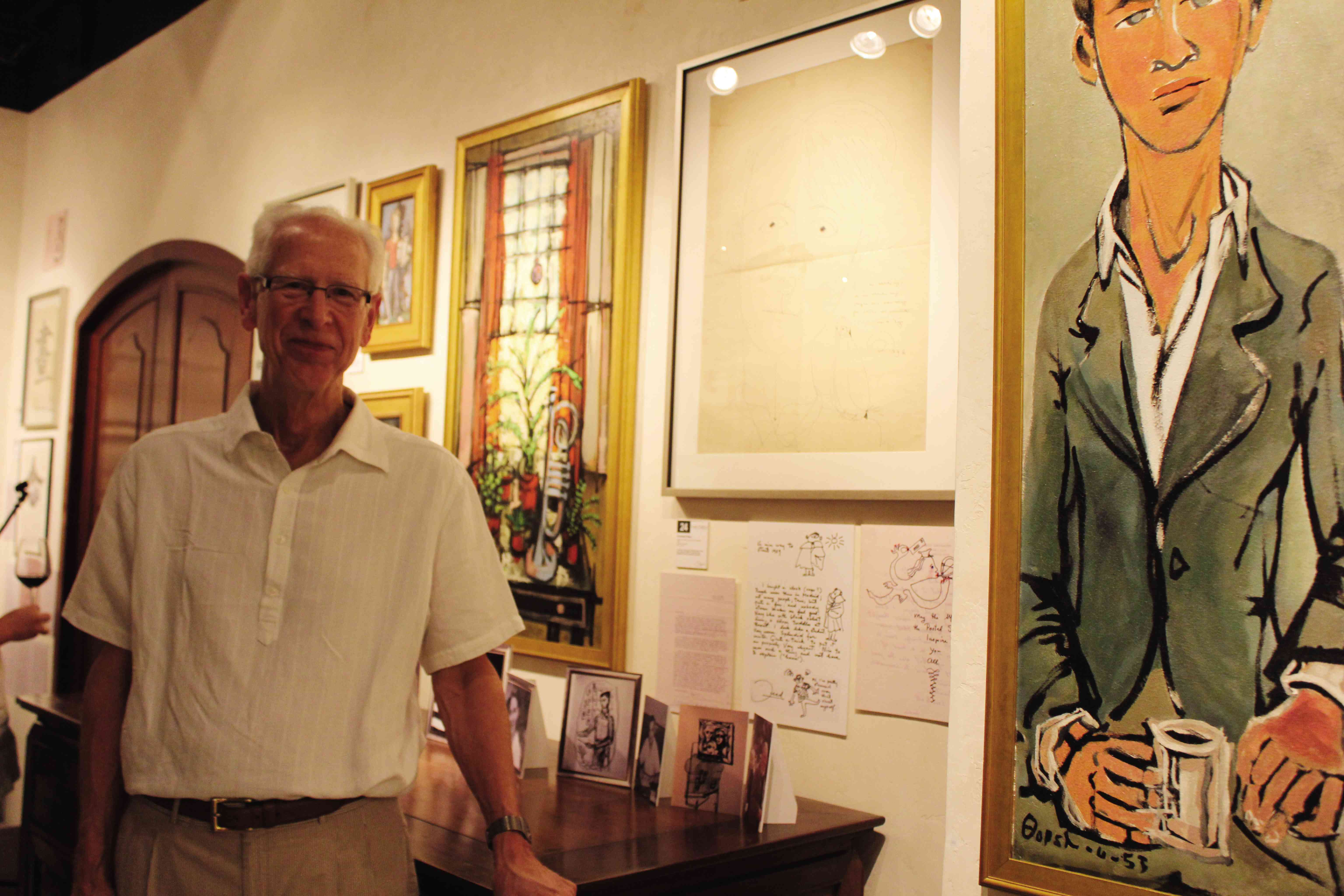
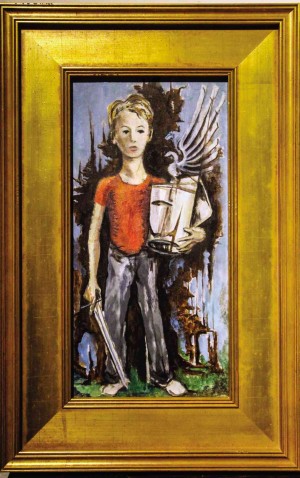
MANILA, Philippines–One winter evening in December 1946, a 22-year-old Harvard University student, Fernando Zóbel de Ayala y Montojo, knocked on the door of 52 Walker Street Place in Cambridge, Massachusetts, a quiet residential neighborhood adjacent to the Ivy League university.
As soon as the door opened, Zóbel clicked his heels, bowed and introduced himself to Jim and Reed Pfeufer, the owners of the house.
“He came in very formally… They bonded immediately when he first arrived, and that friendship continued for more than four decades,” recalled Eric Pfeufer, the youngest and only surviving child of the Pfeufers, now in his 70s. He was about 6, he said, when Zóbel first went to their house.
That extraordinary 40-year friendship is highlighted in an exhibit called “Jim and Reed Pfeufer Collection: A Four-Decade Friendship with Fernando Zóbel,” ongoing until Feb. 6 at León Gallery, G/F, Corinthian Plaza, Paseo de Roxas Ave. corner Gamboa St., Legaspi Village, Makati City.
The exhibit ends with an auction on Feb. 6, 7 p.m., at the Makati Diamond Residences on Legaspi Street, Barangay San Lorenzo, Makati City.
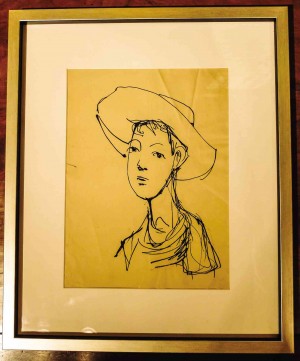
The exhibit presents a collection of 70 artworks by Zóbel—oils, sketches, watercolors, prints—alongside many of the artist’s eloquent letters, written in longhand, each with an illustration unique to the mood of the letter.
León Gallery is in possession of around 500 letters from Zóbel to the Pfeufers, a correspondence that began in the mid-1940s to 1981. (Zóbel died in 1984.)
Most of the letters, Eric Pfeufer told Inquirer Lifestyle, will be donated back to the Cuenca Museum in Spain where they will be compiled with hundreds of other letters, this time from the Pfeufers to Zóbel.
“They can live on in the safety of their archives, and the special memories of our family’s relationship with Fernando can be preserved forever,” Pfeufer said.
Intense conversations
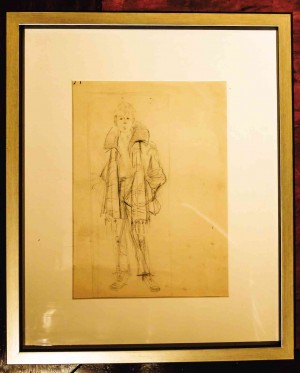
Reed Pfeufer was a member of the Boston School of Art, while Jim helped Zóbel with his prints. Most of his prints at that time were made in the Pfeufer home. But it was Reed, said Eric, who shaped Zóbel’s early works and ideas about art: “They had very intense conversations about painting and studied painting together.”
The figurative collection, painted early in Zóbel’s career, is mostly of the Pfeufers—Jim, Reed and their sons Joachim and Eric. A 17” x 7” portrait of Eric, oil on masonite created in 1953, depicts the young boy as a knight in red tee with a winged helmet in one hand and a sword in the other.
“This is going to be the largest conglomeration of Fernando Zóbels to be sold in a single day. Plus, we have many figurative paintings. You will hardly find a Zóbel figurative in the local collection,” said Jaime L. Ponce de Leon, director of León Gallery.
Some bidders, he added, will be flying in from abroad.

Eric Pfeufer said his Zóbel portrait was painted when the artist was in the Philippines. Zóbel, he said, had done some studies of him two years prior. “So in a sense, the 11-year-old boy he painted in 1953 was really how he remembered me from 1951 when I was 9,” said Eric.
Also on exhibit is “Nothing III (Seated Man),” a linear image of a man seated at a desk that was first exhibited in 1953 at the Philippine Art Gallery and later, in 1954, in a show in Swetzoff Gallery in Boston, Mass. The painting was one of many gifts Zóbel gave the Pfeufers.
‘Saeta’ series
But it was when Zóbel enrolled at the prestigious Rhode Island School of Design—his admission facilitated by Jim Pfeufer who was then the head of the Graphic Design Program—that his artwork took a shift. It was here where Zóbel, said exhibit curator Monchito Nocon, discovered the distinguished American abstract expressionist painter Mark Rothko.
Zóbel’s daily viewing of Rothko’s art eventually led him to create his saeta series, works that depict movement. Saeta is the Spanish word for “arrow” or “dart.” Zobel’s early saetas are black-and-white rulered lines of ink on paper, executed like the push-and-pull of light and dark.

“One day he saw a baker writing icing on a cake, and boom, the light bulb in his mind lit up. Why not use surgical syringe for his paintings? It’s a very challenging medium to use. You need to control your hands when you inject the paint into the canvas,” Nocon said.
Rafael Pérez Madero authenticates all the works, Ponce de Leon said. Madero is the righthand man of Zóbel, and knew every piece of the collection.
Each piece bought will come with a certification from Madero confirming the authenticity of the paintings.
“I was actually unaware of the artworks until recently, as my parents kept portfolios for Fernando Zóbel and many other artists in painting racks, flat files, boxes and various storage places in the house which I inherited from them. I discovered the artworks and letters while going through all of these items,” Eric Pfeufer said.
He started searching for Zóbel’s paintings when he received a phone call from Madero’s assistant. His parents entertained many artists and writers—“a multitude of both aspiring and successful artists constantly flowed into our home”—so that looking for works specifically by Zóbel took a bit of work.

Second family
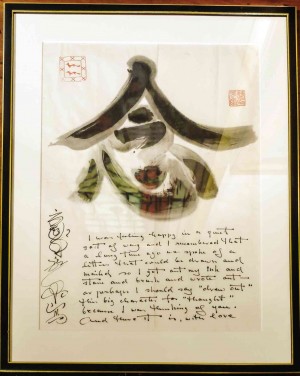
The Pfeufers were like a second family to Zóbel. When Zóbel moved to Cuenca, Spain, to become a full-time artist and founded the Cuenca Museum, the Pfeufers found themselves traveling to Spain, and he to the US.
“I can say he was the most enchanting person I had ever met,” Eric Pfeufer said.
In an undated letter from Zóbel to the Pfeufers, the artist expressed so much affection to his American family: “Much love to you. I think of you very often and I like you very much indeed. You have given color to my whole life.”
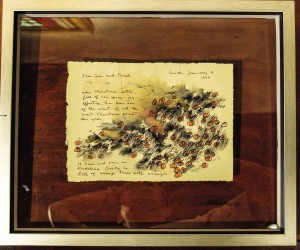
In another letter, one that contained the Chinese character for “Thought” (Zóbel learned calligraphy), he wrote: “… Because I was thinking of you.”

The Makati exhibit is a bittersweet parting for Eric Pfeufer, like bidding farewell to an old friend.
The paintings, however, needed to be appreciated and properly cared for by a new generation. He and his wife spent many agonizing months deciding which ones to retain, a decision that was finalized only on the morning of the exhibit’s opening day.
“I have a flood of emotions each time I look at the collection, both while it was in my possession at home, and especially now that it is shown to the public in all its glory, and about to be dispersed… While it is with great pride and happiness that I viewed the works in their fully restored and framed state, it is also with serious pangs of sadness and regret—although in my heart I know it is the right thing to do,” he said.
Gallery hours are Mondays to Saturdays (Sundays by appointment), 9 a.m.-6 p.m. Call 8562781; e-mail [email protected]. Visit leon-gallery.com and the gallery’s Facebook page.

